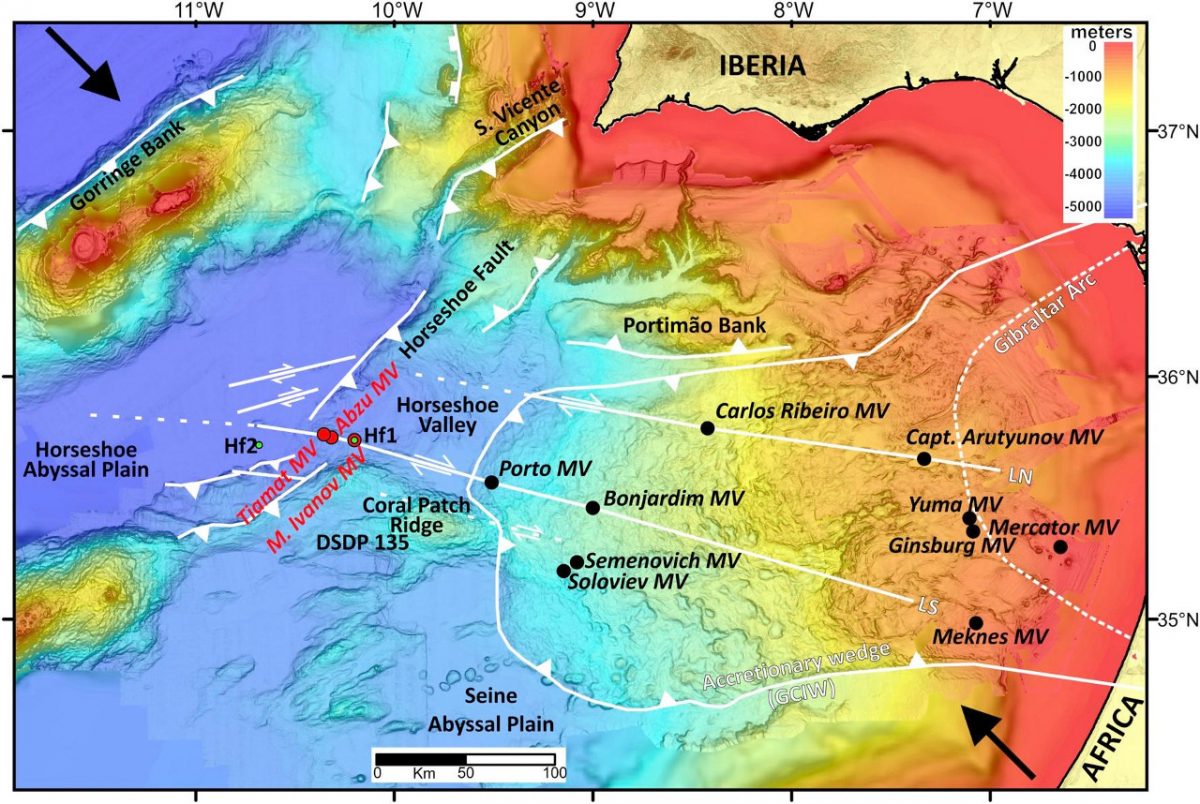The following co-authored article has been published in Marine Geology:
- Nuzzo, M., Tomonaga, Y., Schmidt, M., Valadares, V., Faber, E., Piñero, E., Reitz, A., Haeckel, M., Tyroller, L., Godinho, E., Kipfer, R., Terrinha, P.G., & Hensen, C. (2019). Formation and migration of hydrocarbons in deeply buried sediments of the Gulf of Cadiz convergent plate boundary – Insights from the hydrocarbon and helium isotope geochemistry of mud volcano fluids. Mar. Geol.,410, 56–69 doi:10.1016/j.margeo.2019.01.005.
Highlights:
- Clay dehydration water expelled from buried sediments drives mud volcanism.
- Rise of fluids mediated by crustal-scale strike-slip faults cross-cutting wedge.
- On active accretionary wedge, petroleum accumulations were dismantled in Neogene.
- 4He enrichment and δ13C-CH4 ~−50‰ in fluids reflect an open hydrocarbon system.
- Petroleum pools remain on shallow margin. Microbial gas vented out of active wedge.
Here you can download the manuscript for free until March 13th, 2019.
